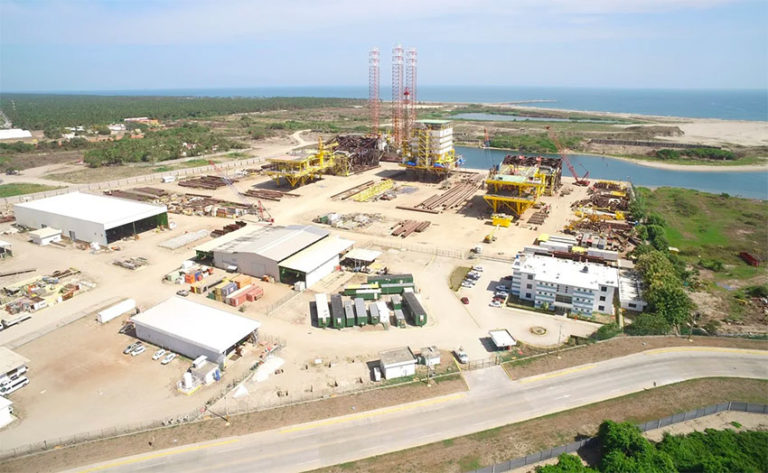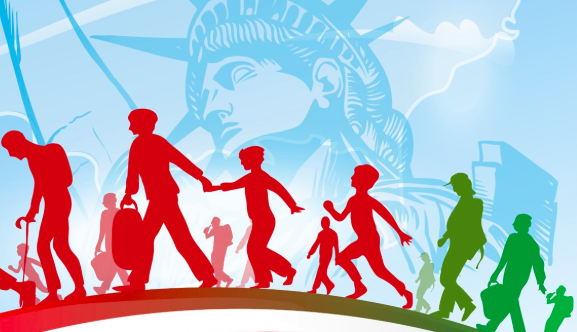NOTE FROM THE EDITOR
Dear readers,
Perhaps you heard it before: “the media is lying, they always lie.”
Sometimes I say that to people when I believe they have been brainwashed by the media, although it’s been difficult to pin point any verifiable lie that you can remember.
You know there is a lie in there, but – because of the mainstream media is owned by a few and they have an agenda – you believe them, and that is because most of them repeat the same news over and over, but with different faces and different approach.
They say: “If you tell a lie big enough and keep repeating it, people will eventually come to believe it.” Repetition makes a fact seem more true, regardless of whether it is or not.
Understanding this effect can help you avoid falling for propaganda, says psychologist Tom Stafford. With this in mind, I introduce you to the following article, “How to read the news, written by one of the most respected investigative journalists in our times.
His tenacity in the search for truth recalls the life of Diogenes (https://www.ancient.eu/Diogenes_of_Sinope/). But what Corbett does, what he has always done, is to FILL THE GAPS. In this article, he reminds us that the biggest lies may be the truths that are never told. – Marvin Ramírez
by James Corbett
corbettreport.com
September 05, 2020 – It’s not the most original observation you’ll read this week, but it’s one of the most important: the news lies to you by omission.
Shocked? I thought not. But let’s really interrogate what this means.
All of us (presumably) would agree with the observation that “the news is lying to you.” But most people hearing that statement immediately interpret it to mean that the news is lying by commission, i.e., deliberately spreading information that they know to be untrue.
While this is certainly true sometimes (and we can all think of examples of the news outright lying about the facts of a case), blatant lies about verifiable facts represent only a tiny fraction of the media’s mendacity. Most of the time, the talking heads of the corporate mouthpiece media are not telling fibs, per se; they’re just leaving out vital pieces of the story.
Often, this type of lying—lying by omission—is a more effective means of duping the public than telling provably untrue statements about independent reality. When the talking heads of the corporate media leave out the proper context for a story, the audience can be led to incorrect conclusions about the world. And, since these perfidious presstitutes haven’t technically said anything that’s untrue, they can never be caught in their lie. They maintain plausible deniability about whether they knew the missing parts of the story.
In the interest of learning how to really read the news, then, let’s look at an example of a news story where the media is hiding key information from the public and see what that news story looks like when we add the relevant context.
Hopefully you’ll remember the Novichok nonsense that took place in Salisbury in 2018. If not, you’ll definitely want to go back and re-read my article on how “The Russian Poison Story is WMD 2.0” and follow that up with a deep dive into the archive of Craig Murray’s coverage of the subject and The Blogmire’s excellent summary of the story.
In case you need a refresher, you can do what the normies do: turn to Wikipedia! Here’s the first paragraph of the wiki summary of the story:
On 4 March 2018, Sergei Skripal, a former Russian military officer and double agent for the UK’s intelligence services, and his daughter, Yulia Skripal, were poisoned in the city of Salisbury, England with a Novichok nerve agent, according to UK sources and the Organisation for the Prohibition of Chemical Weapons (OPCW). After three weeks in a critical condition, Yulia regained consciousness and was able to speak; she was discharged from hospital on 9 April. Sergei was also in a critical condition until he regained consciousness one month after the attack; he was discharged on 18 May. A police officer was also taken into intensive care after attending the incident. By 22 March he had recovered enough to leave the hospital.
While everyone who was following the news at the time has likely heard various pieces of this narrative as it was being reported, only those obsessives who were really following all of the twists and turns in the case will know the incredible absurdities that were casually revealed and quickly buried in the weeks and months after the story fell out of the limelight. Those absurdities include:
- That the military just happened to be running a military exercise—dubbed “Toxic Dagger“—involving responding to chemical, biological and neurological weapons attacks at the exact time of the Skripal poisoning and in the exact same city.
- That the first responder at the scene just happened to be the Chief Nursing Officer for the British Army.
- That the poisonings took place just miles down the road from Porton Down, the site of the UK military’s biological and chemical weapons lab that would itself identify the nerve agent as “novichok.”
- That this “novichok” poison that the crack Russian spies used—allegedly the deadliest nerve agent ever developed—somehow failed to kill either Sergei or Julia.
- That government officials and the dutiful stenographers in the corporate press immediately began using the phrase “of a type developed by Russia” to associate the chemical with the Russian government in the popular imagination, despite the fact that novichok was originally developed in Uzbekistan and is capable of being created and deployed by any chemist in any country anywhere in the world.
- That Trump was prompted to blame the Russians and kick out a raft of Russian diplomats in response to the incident because he was shown some (fake) photos of dead ducks.
I could go on. And on and on. (Trust me, we’ve only scratched the surface of the absurdity here.) But if you’re reading this article in the first place, you likely know the drill by now: a spectacular event takes place, it’s shoved down the public’s throat as part of a campaign to demonize the bogeyman du jour, and it’s promptly dropped as soon as contradictions or uncomfortable questions start to arise about what really happened.
In this case, the propagandistic value of the Skripal case is hardly difficult to divine. It was those dastardly Russians, sending their spies into the heart of enemy territory to kill an old retired double agent who hadn’t been relevant to them in years because . . . reasons? And they did it in the most incredibly complicated (and ultimately ineffectual) way possible because . . . Putin wanted everyone to know that he was capable of (not quite) poisoning people in foreign countries?
. . . Or something like that. Just don’t think too deeply about it.
But just when you thought that particular piece of absurdity had played itself out, it’s back! That’s right, there’s been another high-profile novichok poisoning! This time the target was a person that the corporate lapdog press is referring to as the “leader” of the Russian “opposition,” Alexei Navalny. Apparently, Putin didn’t think he made his point well enough with the Skripals so he has once again resorted to using an arcane, elaborate, and ultimately ineffective poison to (not quite) kill his enemy in a way that would inevitably be immediately tied directly back to himself. The fiend!
. . . Or so the MSM would want you to believe. The truth, as always, is a little more complicated. Kit Knightly over at Off-Guardian breaks it down expertly in his article on the story:
- Alexei Navalny has never held any elected office, his political party doesn’t have a single MP in the Duma, and he polls at roughly 2% support with the Russian people.
- Despite this, and in the middle of an alleged “pandemic”, Vladimir Putin deems the man a threat and orders him killed.
- The State apparatus responsible for unnecessary and seemingly arbitrary acts of political murder decide to use novichok to poison him.
- This decision is taken in spite of the facts that a) Novichok totally and utterly failed to work in their alleged murder of the Skripals and b) It has already been widely publicly associated with Russia.
- Rather unsurprisingly, the novichok which didn’t kill its alleged target last time, doesn’t kill its alleged target this time either.
- Compounding their poor decision making, the Russians perform an emergency landing and take Navalny straight to a hospital for medical care.
- Despite Navalny being helpless and comatose in a Russian hospital, the powerful state-backed assassination team make no further attempts on his life.
- In fact, seemingly determined to under no circumstances successfully kill their intended victim, the Russian government allow him to leave the country and get medical help from one of the countries which previously accused them of using novichok.
- To absolutely no one’s surprise, the Germans claim to have detected novichok in Navalny’s system.
- Vladimir Putin and the Russian government are immediately blamed for the attempted murder.
Sigh. Here we go again. An incredibly unlikely narrative is being shoved down the public’s throat in order to blame that arch-bogeyman, Vladimir Putin.
Never mind that the story makes no sense on its face.
Never mind that Moscow granted permission for Navalny (who is barely a blip on the Russian political radar) to leave the country for medical treatment, thus ensuring that their super secret plan to poison him with novichok would be uncovered and publicized to the world. (As Luke Harding helpfully explains in The Guardian: “The logical conclusion: Moscow wants the world to know.”)
Never mind that it would make no sense for Putin to kill his opponent in such a way (namely, using a mysterious nerve agent that he had been blamed for using in the past and would inevitably implicate himself).
Never mind that this super deadly nerve agent failed to kill the last opponents that he supposedly tried to use it on (and never mind that it has apparently failed once again).
Never mind any of this. The answer to any and all questions about the logic of this story is the same answer that the MSM offers to anyone who dares question why Assad would use messy and horribly ineffective chemical weapons on his own people when his military is on the brink of complete victory over the CIA-supported terrorists in his country. The answer is that Putin, just like Assad, is an insane, bloodthirsty, suicidal monster.
“Germany pressed to rethink Nord Stream 2 pipeline after Navalny poisoning”
Surprise, surprise. It looks like the Navalny case is giving all the opponents of Nord Stream 2 another excuse to derail the project.
If you’ve been following the pipeline politics that are reshaping diplomatic relations in Eurasia, you’ll know that the US has used every trick in the book to halt the construction of the Nord Stream 2 gas pipeline. And if you haven’t been following those pipeline politics, you’ll want to re-read my 2017 article on “US Battles Russia for Heart of the EU,” in which I noted:
Nord Stream 2 is, as the name suggests, an extension of Nord Stream, the natural gas pipeline connecting the Russian port town of Vyborg to the German university city of Greifswald. Nord Stream currently consists of two parallel lines with a capacity of 1.9 trillion cubic feet, but the Nord Stream 2 expansion is expected to increase that capacity to 3.9 trillion cubic feet.
As I reported at the time, the US imposed a new round of sanctions against Russia in 2017 and, surprisingly, the EU actually pushed back on those sanctions. Of course, they only pushed back because the sanctions were targeting European business interests, specifically any and all companies working with Russia in developing the Nord Stream 2 project. But however self-serving that pushback may have been, the incident did demonstrate there is a significant and rising faction in the EUreaucracy who favour building EU independence from the US and pursuing EU business interests, even if those interests are linked to Russia and/or China.
But now the latest dirty trick is being played to scuttle the pipeline project: the poisoning of Navalny with novichok, the nerve agent Absolutely 100% Guaranteed to Be Used Exclusively by the Russian Government or Your Money Back.
And it appears this ploy is working. As Rothschild Reuters reports:
Pressure mounted on German Chancellor Angela Merkel on Thursday to reconsider the Nord Stream 2 pipeline, which will take gas from Russia to Germany, after she said Kremlin critic Alexei Navalny had been poisoned with a Soviet-style nerve agent.
But even here we can detect the “lie by omission” strategy that is skewing our perception of this event. The only two people cited in the article as “pressuring” Merkel to end the pipeline deal are Norbert Roettgen, descirbed as “the conservative head of Germany’s parliamentary foreign affairs committee,” and Wolfgang Ischinger, described as “chairman of the Munich Security Conference and a former ambassador to Washington.”
What Reuters fails to inform its readers is that Norbert Roettgen is a co-chair of the European Council on Foreign Relations and a committed Russophobe who has been calling for a more aggressive German foreign policy against the Russians for years. Also missing from the Reuters report is that Wolfgang Ischinger is also a consummate globalist insider, sitting on the board of the Atlantic Council, the World Economic Forum’s Global Future Council on the Future of International Security and a raft of other globalist bodies.
So, to summarize: Merkel is under “mounting pressure” to scuttle Nord Stream 2 because of the phony-as-a-three-euro-bill Navalny novichok incident. This “pressure” is coming from precisely two men, both well-connected globalist insiders, and neither particularly influential in German politics. Merkel herself, as Reuters admits “has been unwavering in her support for the [Nord Stream] project” and has shown no sign whatsoever that she is even thinking of stopping the pipeline over the incident. But Reuters makes it a headline story and implies that her government is on the brink of succumbing to the pressure.
This is how the news is really reported. In bits and pieces, like a puzzle with only enough pieces there to give the audience an (often mistaken) impression of the events in question. Other pieces of the puzzle may be provided later as the story unfolds, but only for the purpose of further misleading the public with even more poorly reported information lacking in key details.
Sadly, this is the status quo of modern corporate mainstream dinosaur media. And the fact that this context-poor, misleading reporting is the norm these days means it falls on the readers of the news to fill in the gaps in these stories themselves. This often involves independent research and the ability to fit together disparate pieces of information reported in bits and pieces over many months and even years.
Naturally, it isn’t feasible for every individual to do this with every story they ever see in the media. But at least keep this in mind: if you have only read one report on a major news event, you not only don’t know the full story of that event but you may be even worse off than if you had never read it at all.
Alexander Pope may have meant it as a warning when he penned the famous line “A little learning is a dangerous thing.” Unfortunately for humanity, the globalists and their media mouthpieces have managed to turn that observation into a business model.










